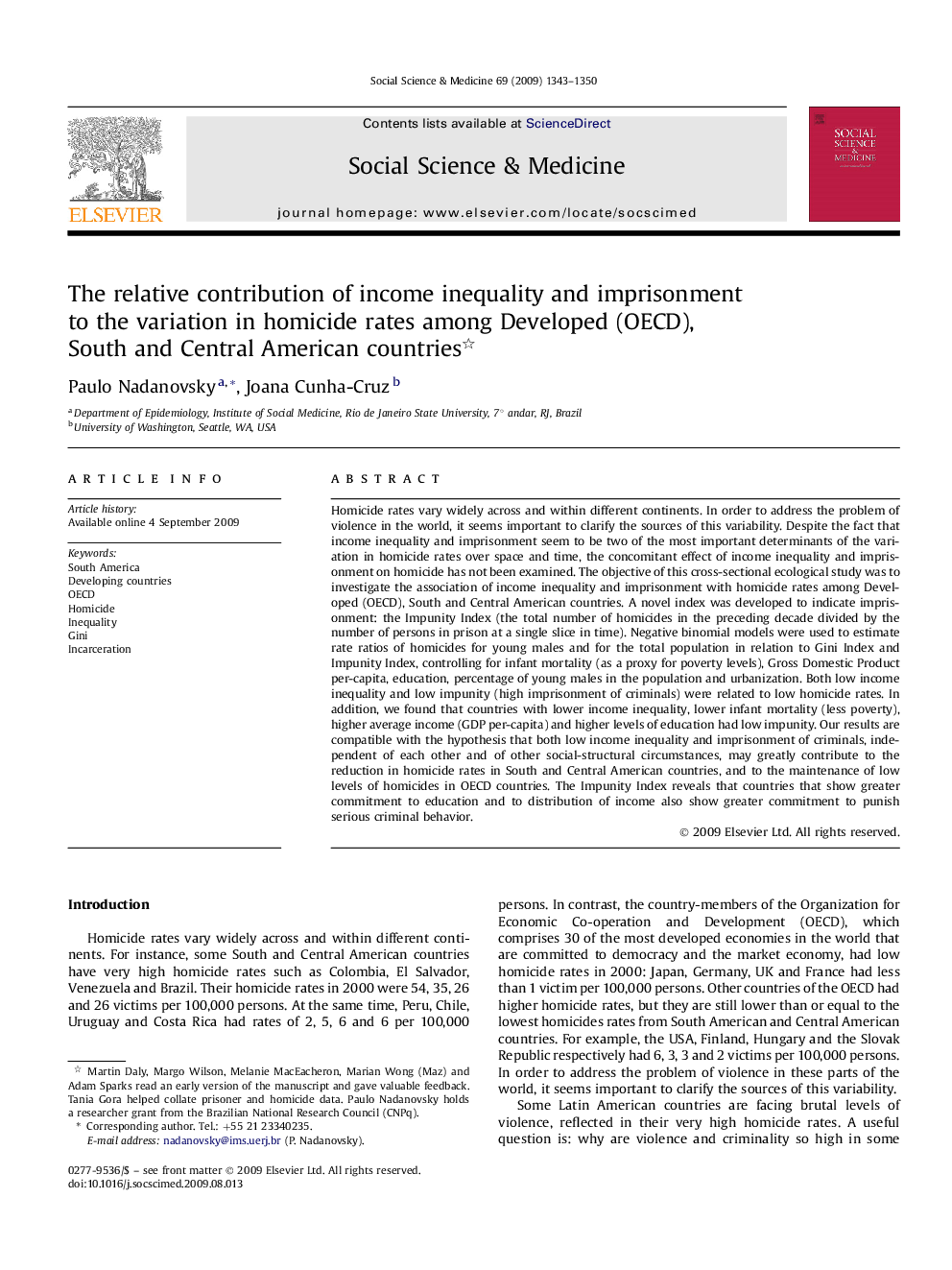| کد مقاله | کد نشریه | سال انتشار | مقاله انگلیسی | نسخه تمام متن |
|---|---|---|---|---|
| 953232 | 927574 | 2009 | 8 صفحه PDF | دانلود رایگان |

Homicide rates vary widely across and within different continents. In order to address the problem of violence in the world, it seems important to clarify the sources of this variability. Despite the fact that income inequality and imprisonment seem to be two of the most important determinants of the variation in homicide rates over space and time, the concomitant effect of income inequality and imprisonment on homicide has not been examined. The objective of this cross-sectional ecological study was to investigate the association of income inequality and imprisonment with homicide rates among Developed (OECD), South and Central American countries. A novel index was developed to indicate imprisonment: the Impunity Index (the total number of homicides in the preceding decade divided by the number of persons in prison at a single slice in time). Negative binomial models were used to estimate rate ratios of homicides for young males and for the total population in relation to Gini Index and Impunity Index, controlling for infant mortality (as a proxy for poverty levels), Gross Domestic Product per-capita, education, percentage of young males in the population and urbanization. Both low income inequality and low impunity (high imprisonment of criminals) were related to low homicide rates. In addition, we found that countries with lower income inequality, lower infant mortality (less poverty), higher average income (GDP per-capita) and higher levels of education had low impunity. Our results are compatible with the hypothesis that both low income inequality and imprisonment of criminals, independent of each other and of other social-structural circumstances, may greatly contribute to the reduction in homicide rates in South and Central American countries, and to the maintenance of low levels of homicides in OECD countries. The Impunity Index reveals that countries that show greater commitment to education and to distribution of income also show greater commitment to punish serious criminal behavior.
Journal: Social Science & Medicine - Volume 69, Issue 9, November 2009, Pages 1343–1350